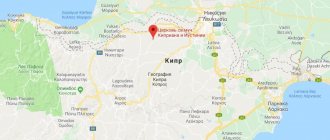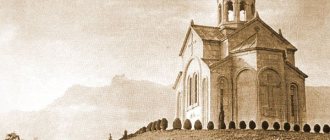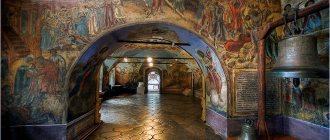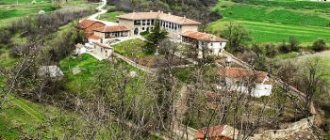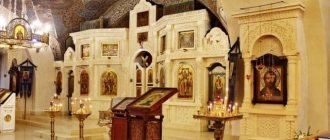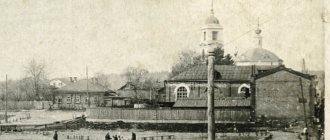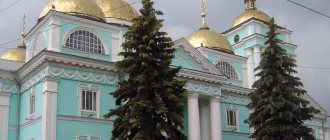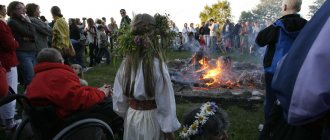Mir
Palestine Men's Skete of Chariton the Confessor (Wadi Fara) Map loading in progress...
{"format":"leaflet","minzoom":false,"maxzoom":false,"limit":50,"offset":0,"link":"all","sort":[""], "order":[],"headers":"show","mainlabel":"","intro":"","outro":"","searchlabel":"\u2026 \u0441\u043b\u0435\ u0434\u0443\u044e\u0449\u0438\u0435 \u0440\u0435\u0437\u0443\u043b\u044c\u0442\u0430\u0442\u044b","default":"","import-annotation":false,"width ":"auto","height":"350px","centre":{"text":"","title":"""link":"""lat":31.833330000000000126192389870993793010711669921875,"lon": 35.3000200000000035061020753346383571624755859375,"icon":""},"title":"","label":"","icon":"","lines":[],"polygons":[],"circles":[ ],"rectangles":[],"copycoords":false,"static":false,"zoom":8,"defzoom":14,"layers":["OpenStreetMap"],"image layers":[] ,"overlays":[],"resizable":false,"fullscreen":true,"scrollwheelzoom":true,"cluster":false,"clustermaxzoom":9,"clusterzoomonclick":true,"clustermaxradius":80, "clusterspiderfy":true,"geojson":"","clicktarget":"","showtitle":true,"hidenamespace":false,"template":"","userparam":"","activeicon": "","pagelabel":false,"ajaxcoordproperty":"","ajaxquery":"","locations":[{"text":"\u003Cb\u003E\u003Ca href=\"/palomnik/%D0% 9C%D1%83%D0%B6%D1%81%D0%BA%D0%BE%D0%B9_%D1%81%D0%BA%D0%B8%D1%82_%D0%A5%D0%B0% D1%80%D0%B8%D1%82%D0%BE%D0%BD%D0%B0_%D0%98%D1%81%D0%BF%D0%BE%D0%B2%D0%B5%D0% B4%D0%BD%D0%B8%D0%BA%D0%B0_(%D0%92%D0%B0%D0%B4%D0%B8_%D0%A4%D0%B0%D1%80%D0%B0 )\» title=\»\u041c\u0443\u0436\u0441\u043a\u043e\u0439 \u0441\u043a\u0438\u0442 \u0425\u0430\u0440\u0438\u0442\u043e\u043d\u0430 \u0418\u0441\ u043f\u043e\u0432\u0435\u0434\u043d\u0438\u043a\u0430 (\u0412\u0430\u0434\u0438 \u0424\u0430\u0440\u0430)\»\u003E\u041c\u0443 \u0436\u0441\u043a\ u043e\u0439 \u0441\u043a\u0438\u0442 \u0425\u0430\u0440\u0438\u0442\u043e\u043d\u0430 \u0418\u0441\u043f\u043e\u0432\u0435\u 0434\u043d\u0438\u043a\u0430 ( \u0412\u0430\u0434\u0438 \u0424\u0430\u0440\u0430)\u003C/a\u003E\u003C/b\u003E\u003Chr /\u003E\u003Ca href=\"/palomnik/%D0%A1%D0% B2%D0%BE%D0%B9%D1%81%D1%82%D0%B2%D0%BE:%D0%90%D0%BD%D0%BD%D0%BE%D1%82%D0%B0 %D1%86%D0%B8%D1%8F\" title=\"\u0421\u0432\u043e\u0439\u0441\u0442\u0432\u043e:\u0410\u043d\u043d\u043e\u0442\u0430\u0446\ u0438\u044f\»\u003E\u0410\u043d\u043d\u043e\u0442\u0430\u0446\u0438\u044f\u003C/a\u003E:»\u0421\u043a\u0438\u0442 \u0421\u0 432\u044f\u0442\ u043e\u0433\u043e \u0425\u0430\u0440\u0438\u0442\u043e\u043d\u0430'', \u043d\u0430\u0445\u043e\u0434\u044f\u0449\u0438\u0439 \u0441\u044f \u0432 \u0432 \u0435\u0434\u0435\u043d\u0438\u0438 \u0420\u0443\u0441\u0441\u043a\u043e\u0439 \u0414\u0443\u0445\u043e\u0432\u043d\u043e\ u0439\u041c\u0438\u0441\u0441 \u0438\u0438 \u0420\u041f\u0426\u0417, \u0431\u044b\u043b \u043e\u0441\u043d\u043e\u0432\u0430\u043d \u0432 XX \u0432\u0435\ u043a\u0435\u043d\u0430\u043c \u0435\u0441\u0442\u0435 \u0443\u0442\u0440\u0430\u0447\u0435\u043d\u043d\u043e\u0439 \u0424\u0430\u0440\u0430\u043d\u0441\ u043a\u043e\u0439\u041b\u0430 \u0432\u0440\u044b.","title":"\u041c\u0443\u0436\u0441\u043a\u043e\u0439 \u0441\u043a\u0438\u0442 \u0425\u0430\u0440\u0438\u0442 \u043e\u043d \u0430 \u0418\u0441\u043f\u043e\u0432\u0435\u0434\u043d\u0438\u043a\u0430 (\u0412\u0430\u0434\u0438 \u0424\u0430\u0440\u0430 )","link":"" ,"lat":31.833330000000000126192389870993793010711669921875,"lon":35.3000200000000035061020753346383571624755859375,"icon":""}],"image Layers":[]}
32.083738; 35.321847
Palestine, West Bank
Palestine
Skete of Saint Chariton
, administered by the Russian Spiritual Mission of the ROCOR, was founded in the 20th century on the site of the lost Faran Lavra.
The Faran Lavra (Arabic: Dir Faran) is a lost monastery of the Jerusalem Orthodox Church, the oldest surviving in Palestine, founded by the Monk Chariton the Confessor in the 330s in a cave into which he was led by robbers.
Located a few kilometers east of Jerusalem in the Judean Desert in the valley of Nahal Prat (En Prat (En Fara)), in Arabic Wadi Qelt.
History[edit]
The Lavra was founded near the place where the ancient Jericho road crossed the Kutilian stream and where the village of Paran lay. The Lavra was located in the gorge, on both banks of the Kutiliy stream, in coastal caves and grottoes.
A few years after the founding of the monastery, Saint Chariton left the Faran Lavra and retired to the Fekoi gorges and on the slope of a high mountain laid the foundation of the new Sukki Lavra. However, before his death, the monk returned to the Faran Lavra and was buried here.
The Lavra's heyday occurred in the 6th century. In the 8th century, she still existed: her name is found either in church annals, or in the message of one or another bishop or abba. At the beginning of the 9th century, due to civil strife between the children of Harun al-Rashid, the monastery was abandoned by the monks.
In the 19th century, the monastery was abandoned and fell into complete destruction.
In the second half of the 19th century, the head of the Russian Ecclesiastical Mission in Jerusalem, Archimandrite Antonin (Kapustin), made several unsuccessful attempts to obtain the monastery into the ownership of the Russian Empire. This was only achieved in the 1890s.
In 1903, the former rector of the Russian Athos Monastery of the Exaltation of the Cross, Hieroschemamonk Panteleimon, settled here with monks and novices.
A few years later, a fire consumed almost all the buildings, so it was only partially possible to restore the monastery buildings. The restored monastery was a two-story building with many cells at the foot of the cliff. In the rock itself, about 20 m high, there is a cave church in the name of St. Chariton.
The last Athonite inhabitant of this monastery, Fr. Gerasim died in the 1960s. After this, the skete was empty, with the exception of a few days when members of the Russian Spiritual Mission of the ROCOR visited it, and in addition, on the day of St. Chariton, September 28, the clergy of the Mission served the Divine Liturgy in the skete.
Historical and pilgrimage tours to the Holy Land (and beyond)
Good afternoon My name is Igor Tsaritsyn, I am a licensed guide, I came from St. Petersburg. I offer individual and group excursions to the Holy Land and beyond. Discover the biblical countries with their cities and castles, monasteries and temples, seas and deserts, aqueducts and waterfalls, mosaics and wineries. Our main focus is pilgrimage trips and local history tours, the programs of which are compiled individually. We remain within the framework of traditional religions, biblical and modern history, and are ready to go to Egypt, Israel, Jordan and Turkey to show and tell you a lot of interesting things ——— E-mail Skype, Vkontakte: igor.tsaritsyn Facebook: igor.tsaritsyn and @igor.tsaritsyn.tours WhatsApp: +972-522955422
Dear friends!
Contact us and follow the announcements! What's new?
- Preliminary travel program for 2021: – 11-17/11 Holy Land (7 days / 6 nights). Memory of the Martyr. St. George the Victorious – 11/26-02/12 Holy Land (7 days / 6 nights). Memory sschmch. Philumen the Holy Sepulcher with the liturgy at Jacob's Well (our traditional tour) - Biblical Turkey. In the footsteps of the early Christians (8 days / 7 nights): Istanbul - Cappadocia - Tarsus - Antioch. Exclusive tour – Eastern Türkiye. Syrian monasteries of the region Tur Abdin (Mardin, Midiyat, Nisibin) – Nemrut Dag – Edessa – Gaziantep (Zevgma) – Antioch (8 days / 7 nights). Exclusive tour of the Mosaics of the Mor Gabriel Monastery (Mardin). Photo by A. Rychkov
- An approximate program of tours to Egypt is here. You can add a holiday on the Red Sea. Tours to Sinai, Turkey (Istanbul, Cappadocia, Antioch, Edessa, Mardin, Tur Abdin), as well as Jordan, are available at any time except during periods of extreme heat. Our partner in Russia: travel agency from 7 countries. Photos and short reports are published on Facebook
- Old article about the City of David in Jerusalem has been revised. There are no special sensations, although...
- Added a story about the Bethlehem Icon of the Mother of God (based on the hypothesis of the Jerusalem art historian, Dr. Anastasia Keshman). Perhaps it will help to part with some of the myths that have developed in recent years
- The note about Hippos (Susita), one of the two poleis of the Decapolis in the Holy Land, has been rewritten. Photo: M. Eisenberg (2019)
- Essay on Acre revised
- Cappadocia. Cave temples of Goreme. January 2021
- Egypt. Eastern desert. The oldest monastery of Anthony the Great (305). Cave of the founding father (height 680 m above sea level, height above the monastery – 276 m). Unforgettable sensations from the climb (photo by E. Zatei)
- The story about the Masada fortress has been updated. In the 5th-7th centuries there was a Byzantine monastery here, supposedly founded by Euthymius the Great, and in one of the caves the inscription “Lord Jesus” in Aramaic was found.
- With pilgrims under the Ficus religiosa
in the Monastery of the Holy Apostles in Capernaum - Edited note about the Church of the Great Martyr. St. George the Victorious in Lydda (Lod). Added photographs, memories of pilgrims, the legend of the Lydda icon (the image on the column), etc.
- The essay about the monastery of Katamon (Simeon the God-Receiver) in Jerusalem has been revised:
- Added a note about the Church of the Assumption of the Most Holy. Our Lady of Gethsemane (photo by A. Nixon)
- The page about the Temple of Photinia the Samaritan Woman in Nablus (Shechem) has been reworked
- Transfiguration of the Lord with the Divine Liturgy on Tabor. In the photo: cloud 2021
- Added essay on the Temple of the Healing of Ten Lepers in Burkina
- Text of the note about the Lavra of St. Savva the Sanctified is supplemented by a list of temples and the desert of the monastery, as well as the order of services during the days of Great Lent. In the photo: the cell of John of Damascus, where, according to legend, he spent about 35 years
- The story about the beautiful Latin Church of the Visitation (Meeting) of St. has been revised. Maria is right. Elizabeth in Ein Karem (“Gorney”)
- Added Jerusalem legend about the Tree of Godfrey of Bouillon
- An essay about the ossuary of “Alexander, son of Simon of Cyrene” found in 1941 has been published.
- Changes have been made to the story about the Monastery of St. Onuphrius in the Hinnom Valley. Added the legend of Bir Ayyub as a place of healing rights. Job
- The essay about the Shepherds' Field - the place of the gospel of the Birth of Jesus Christ (Luke 2:14) has been rewritten. In the photo: an ancient olive tree (witness to the event, according to local legend)
- The page about the monastery of St. George Khozevit
- Added story about Herodion. Versions about the burial place of King Herod the Great were discussed
- Work continues on the essay about the Cross Monastery. We thank historian Dr. Besik Khurtsilava for providing information and photographs. Peter Iver (5th century), legendary founder of the monastery
- The story about Macheron (Mikhvar) - the place of the beheading of St. Chapters of John the Baptist:
- Added a note about Jericho and the Tower of Jericho. In the photo: Mount of Temptation (Arabic: Jabal at-Tajrube)
HOTELS AND MORE
Booking.com
Booking.com
Temples[edit]
- Church of St. Nicholas the Wonderworker
- Interior decoration of the Church of St. Nicholas the Wonderworker
- Cave Church of St. Chariton the Confessor
- Chapel in honor of the Icon of the Mother of God “Goalkeeper”
Church of St. Nicholas the Wonderworker
. The church is dedicated to St. Nicholas the Wonderworker, like its unpreserved predecessor, built in the early 20th century. The previous church was destroyed in the late 1960s, possibly during the Six Day War. The modern church, apparently, will in some ways repeat the forms of its predecessor. It was built by the forces of Fr. Khariton and his assistants, apparently in 2000-2006.
Cave Church of St. Chariton the Confessor
. The church is located 12 meters above the bottom of a sheer rock cliff in a man-made cave carved by rebels led by Simon Bar-Giora in the mid-1st century AD. The church in the cave was consecrated by Bishop Macarius of Jerusalem around 330.
Unknown (New) Church
built in the 6th century. It is called unknown because no information has been preserved in whose honor it was consecrated.
Chapel of the Icon of the Mother of God “Goalkeeper”
(Πορταΐτισσα). The chapel was built or restored after the resumption of the monastery in 1997 by Fr. Khariton. By 2006, the chapel already existed in its modern form.
Church of Cyriacus the Hermit
was built between 1905 and 1910. Not preserved.
Saint Chariton of Rome, commemoration date: June 14 according to the new style
Among the saints named by this name, the martyr Chariton of Rome is also known.
There is not much information left about the life of the saint. It is known that he, along with other martyrs Justin, Evelpist, Hierax, Paeon, Valerian, Justus and the martyr Charita, suffered for Christ in 166 in Rome. They were imprisoned in a Roman prison.
Before the trial began, they firmly confessed their Christian faith. Mayor Rusticus asked one of the martyrs if he thought that in fact, after suffering here on earth, he would ascend to heaven. Saint Justin replied that he was firmly convinced of this. Then the ruler invited all Christians to make sacrifices to the pagan gods, but they refused. After which Rustic pronounced the death sentence. The saints were beheaded.
Icon of Saint Chariton of Rome, martyrHow to get there[edit]
Located a few kilometers east of Jerusalem in the Judean Desert in the valley of Nahal Prat (En Prat (En Fara)), in Arabic Wadi Qelt.
Address
: Skete of Saint Chariton, PO Box 20164, Jerusalem 91200, Israel
Directions
:
1)
Public transport in this case is of little use. However: Jerusalem city buses 8, 25, 22 to the stop st. Ha-Shisha-Asar, building 2, in the Pisgat Ze'ev Merkaz area, where there is a transfer to the bus. 172 to the settlement of Anatot (Almon). Auto. 172 runs on weekdays 3 times a day - 7:52, 10:00, 16:00, back - 8:17, 10:25, 16:25; on Friday 2 times – 10:00, 15:00, back – 10:25, 15:25; does not run on Saturdays. It should be noted that the monastery of Chariton the Confessor is officially open to the public from 10 am to 12 noon on Saturdays, that is, when there are no buses. If, through the Spiritual Mission of the ROCOR or by obtaining a mobile phone, Fr. Khariton, if you agree to visit outside of normal hours, the bus schedule is given above. From the settlement, the second or third (after the checkpoint at the entrance to the settlement) turn right - there is a sign. Then walk to the ticket office of the Ein Prat National Park (ticket price is 29 shekels), then walk down the serpentine road for about 1.5 km to the parking lot. Further west approximately 350-400 m.
2)
Private/rental car or taxi.
From the center of Jerusalem to the northeast to the Pisgat Ze'ev Merkaz area. Exit to the east through the Khizme checkpoint. After the checkpoint, go straight east along road 437 (signs - Ma'ale Adumim, Jericho, Dead Sea, Mishor Adumim, but do not turn left to the north following signs for Ramallah and Ramallah Bypass) approximately 4 km. Turn left at the sign for Anatot (Almon). After entering the settlement - as in the first option, only on wheels. The last 400 m from the parking lot is on foot anyway. Note
: Even during the stated opening hours, the monastery gates will be closed. You need to knock and wait patiently (you will not be allowed in until the previous tourist/pilgrim/group is released). It is recommended to arrive closer to 10am on Saturday rather than 12pm.
Information:
- Hebrew: מנזר פארן
- Address: Israel, Wadi Qelt valley
- Phone: no
- Website: https://iarchos.wordpress.com/2011/01/17/st-charitons-monastery-en-farrah
- Wikipedia article: https://ru.wikipedia.org/wiki/%D0%A4%D0%B0%D1%80%D0%B0%D0%BD%D1%81%D0%BA%D0%B0%D1% 8F_%D0%BB%D0%B0%D0%B2%D1%80%D0%B0
- Working hours: Sat. 10.00-12.00; other days - by agreement with the Russian Spiritual Mission in Jerusalem
- How to get there: from Jerusalem bus. No. 172 in the village. Almon, then walk 2 km.
- Diocese: ROCH
- Building type (Church/Monastery/Temple…): monastery
- What shrines and relics: the cave of St. Khariton
- In what condition: being restored
- In what year was it built: Founded by St. Chariton the Confessor in the 330s. in the cave to which he was brought by robbers.
- Photos from Instagram:
- Map:
